La Bellevue, France 12 Nov 1917 - 27 Mar 1918
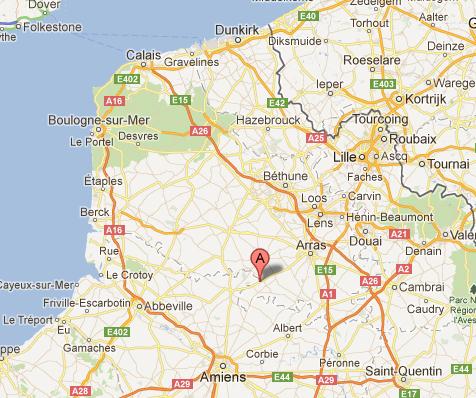
62760 La Bellevue, Warlincourt-lès-Pas, France
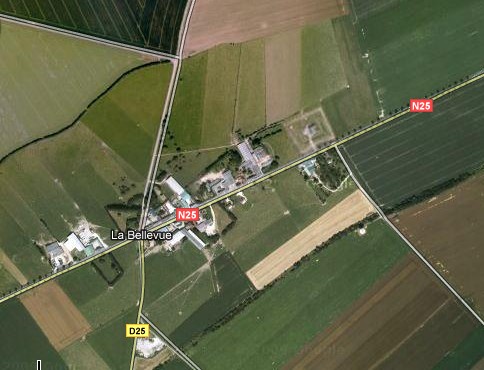
The area of the airfield around 2011 (image courtesy of Google Maps)
The area of the photograph that has been "fuzzed out" is a French Air Force communications centre.
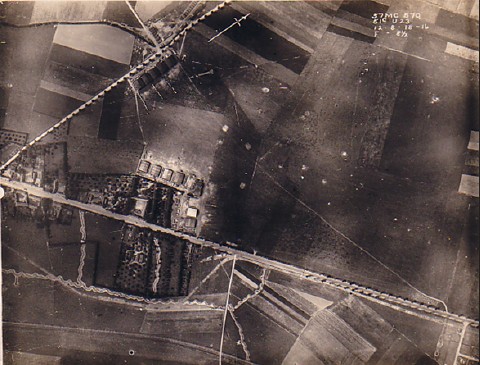
The orientation of the top photograph is slightly different to this wartime image but the layout of the roads has remained unchanged.
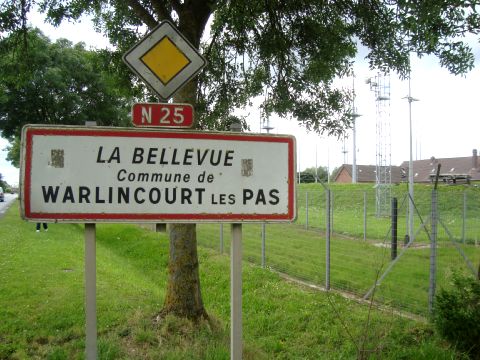
La Bellevue with the communications centre in the background
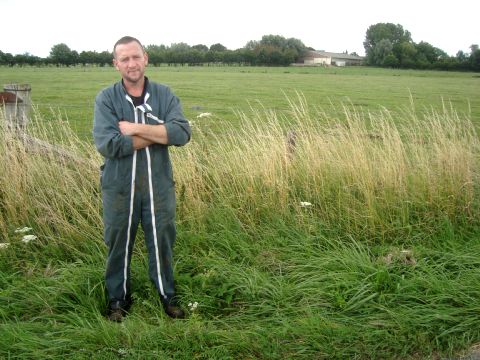
Monsieur Pascal Audegond kindly explained the layout of the airfield. The hanger area is behind him.
Pascal informed us that he occasionally finds minor WW1 items buried in his fields.
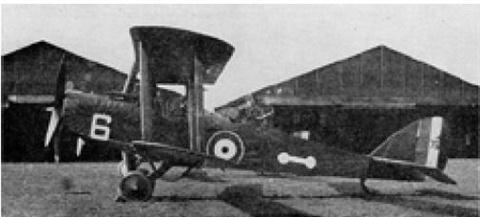
An important historic shot of a No 49 Sqn DH.4 A7694 ‘6’ taken at La Bellevue airfield in France during February 1918.
It comes from the collection of S/Ldr then Lt A.H. Curtis (the pilot) and shows his Observer 2nd/Lt C.W. Phillips.
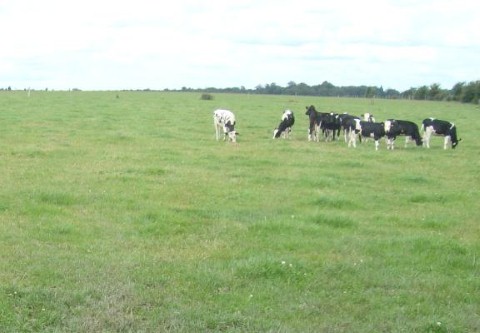
Where cows now graze, DH4s used to taxi
49Sqn and La Bellevue
12 Nov 1917 - 27 Mar 1918
Casualties: 11 x DH4 , 8 x killed, 2 x wounded and 2 x PoW.
On their arrival the squadron was employed in the day-bomber role as part of the 3rd (Army) Wing.
The first bombing raid was made on November 26th 1917 when 8 DH4swere sent to bomb Rieux, a railhead near Cambrai.
Four aircraft bombed the primary target, three bombed Sailly instead and one completely aborted.
Deeper bombing raids were impossible due to low cloud. The increased effectiveness of the opposition meant that 14 x SE5s were required to escort the bombers but on this occasion no opposition was encountered.
However, three days later the squadron ran into the Richthofen Circus and during the fight one squadron aircraft was lost.
The end of the year closed gloomily for the Allies, very significant efforts to force a breakthrough on the Western Front had all failed.
Counter-battery photography started in January 1918, when formations of about seven machines were sent over the enemy lines; three carried cameras and the others acted as escorts. Poor weather with thick cloud and heavy rain reduced the number of operations.
On the 19th February, expecting a German offensive, plans were issued that would place RFC squadrons in locations that would help with the defence of Amiens.
On March 19th and 20th rain and low cloud made flying all but impossible.
Then at 04:45hrs on March 21st the German offensive began with a huge and continuous artillery bombardment.
On March 22nd 1918, with the Germans advancing swiftly, orders were issued for 17 RFC squadrons to fall back from their current airfields to new locations. On March 25th a gap opened between the BEF and the French armies and the German took Péronne, Noyton and Soissons.
The RFC struggled to overcome huge logistical problems. However, some excellent organisation and the removal of a lot of 'red tape' ensured that the locations for new landing grounds were found and quickly made ready. The two weeks from March 21st saw forty-five new aerodromes established.
On March 25th 49Sqn moved NW to a landing ground called Les Eauvis.
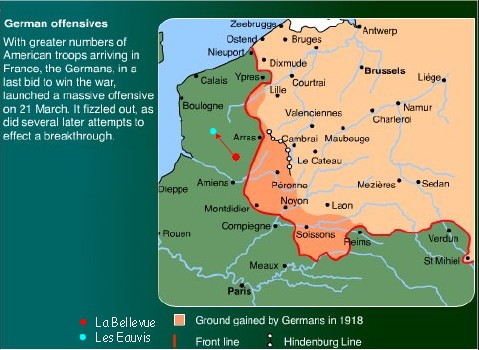
The RFC falls back to safer airfields
